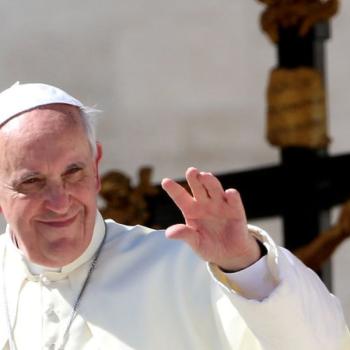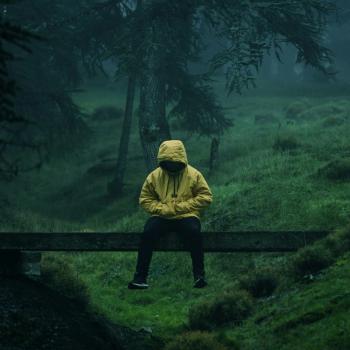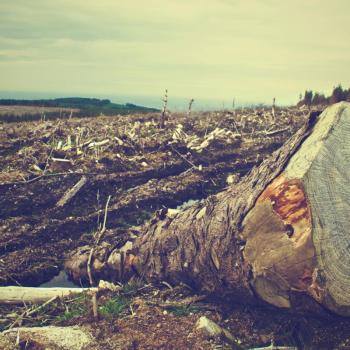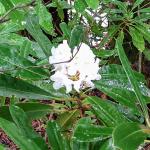A few years ago, I was strolling through the Lexington Cemetery in Kentucky when my eye caught this image on a gravestone. Lichen had grown in the shape of a tree canopy around the top of the letter “T” in September.
To me, the cemetery – and this image – is a perfect example of the juxtaposition of life and death.
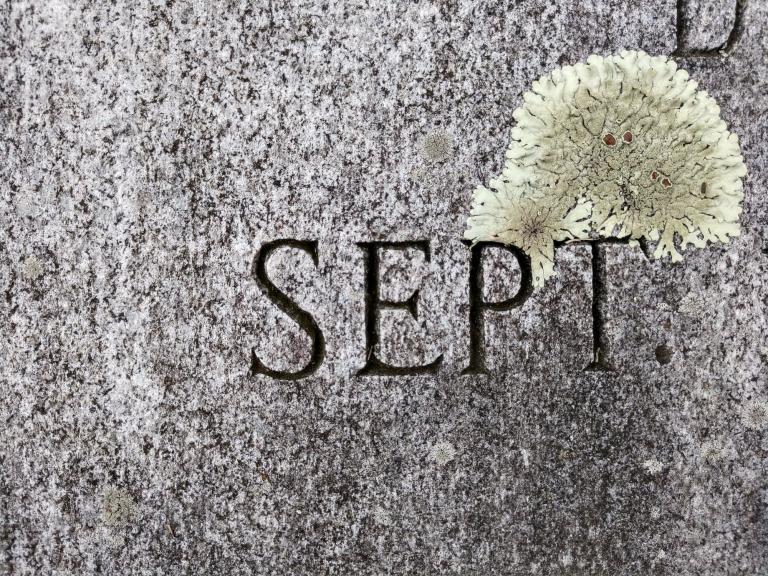
Why would I be strolling through a graveyard? It was Lexington Tree Week and I was part of a tour learning about the majestic arboretum that co-exists with the cemetery.
Trees towering over the tombs remind me that Nature takes all of us into itself. Our first and last breaths are bound up with the exhalation of the trees. Our bodies take in the fruits of the soil as we live. The soil takes us in when we die.
This September, the poignancy is made more painful recognizing the enormous dying that has happened over the last six months.
As I write this on September 1, 2020, more than 25 million people across the planet have been diagnosed with the coronavirus, and 844,312 have died from it. The pandemic leaves a trail of carnage in its wake that is dizzying to comprehend.
Earth’s momentary sabbath jubilee while humanity lay dormant in its spring quarantine is just a memory now. With little patience for the sustained discipline of slowing down, and with the threadbare social net fraying beneath us, we’ve fallen back into our old ways of relentless capitalism.
It’s a system that eats people alive even as they claw for the “right” to sacrifice themselves for it.
It’s a system that consumes the living and the dead – the fossil fuels that haunt us with heat-trapping gasses meant only for Earth’s deepest places. The resulting onslaught of climate-induced catastrophes erupts in wildfires felling ancient redwoods while hurricanes and typhoons rampage across sea and land. All the while, the Trump/GOP assault against the very water, land, and air we need to live feels suffocating.
Suffocation was the way George Floyd died under the knee of an officer on a street in Minneapolis.
“I can’t breathe,” he gasped as we all gasped in horror, watching. Whiteness is another system that eats people alive. It’s a demonic idea that fools humans into sacrificing each other for the sake of retaining an ephemeral sense of power and control. Like the wildfires feeding on revered redwoods, the flames of racial hatred are supercharged by an atmosphere both hot and toxic. We wonder if the revered ideals of democracy, decency, and compassion will even survive.
Live, even in the face of death
In an essay called “Love Every Leaf,” my friend and colleague Margaret Bullitt-Jonas describes what she has learned from her deep communion with trees. They have taught her what it means to be alive in the face of so much death.
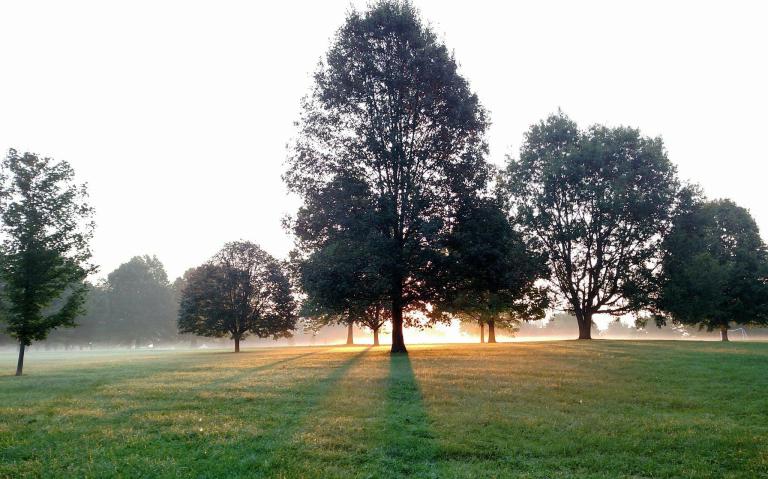
She wrote this essay for a book we co-edited called Rooted and Rising: Voices of Courage in a Time of Climate Crisis. It’s one of the twenty-one essays that I return to often when I stand among the tombs and trees, seeking the next step on the path of this death-strewn landscape.
Just as much as I want to keep the living world alive, I want to keep my soul alive. Protecting the outer landscape requires that I protect my inner landscape, too. I find ongoing energy and courage to rise up and safeguard life only if I am spiritually grounded. The intention to stay inwardly alive – awake, aware, sensitive to self and others, and responsive to the leadings of Spirit – must be renewed every day.
That’s where prayer and meditation come in. To whom do I pray? To the divine Father/Mother who creates life and who loves every inch of Creation, the God who made an “everlasting covenant” with every living creature on Earth (Genesis 9:16). To Jesus Christ, whose mission statement was clear: “I have come that they may have life, and have it abundantly” (John 10:10). To the Holy Spirit who longs, even more than I do, to “renew the face of the earth” (Psalm 104:31).
Maybe you can relate to this longing to keep your soul alive, even when death pounds on your door, or slithers into your lungs, or laughs at your faith.
Or perhaps prayer seems pitifully weak and ineffective to you. Like whispering, “Please stop,” when the hurricane of hatred rips the roof off. And when the daily barrage of evil words and deeds tromps like fascist boots through the screen you hold in your hand.
I want to tell you something equally weak, but paradoxically effective. Here are the words I want to whisper to you as we stand among the trees and tombs.
“Don’t stop. Keep going. Love every leaf.”
I learned this phrase, “love every leaf,” from Margaret. She learned it from a character in Dostoevsky’s novel, The Brothers Karamazov. Father Zossima is a Russian Orthodox abbot who, on his deathbed describes the ethic of love that has inspired his life.
Love all God’s creation, the whole and every grain of sand in it. Love every leaf, every ray of God’s light. Love the animals, love the plants, love everything. If you love everything, you will perceive the divine mystery in things. Once you perceive it, you will begin to comprehend it better every day. And you will come at last to love the whole world with an all-embracing love.[1]
This is the love I cling to during this September Mourn.
It’s a love I snatch away from fascist boots and demonic guns. It’s a love I shelter with a fragile heart and a determined mind. And it’s a love I offer to my children and husband, my students and colleagues, my closest friends and my farthest enemies.
This love I offer to you as well. And I urge you to whisper it, shout it, write it, dance it, sing it, pray it. Love the trees and the tombs. Love the ground that supports them both, and you as well. Root yourself in this love, and let it rise in you. Lament and love will keep us alive.
[1] Fyodor Dostoevsky, The Brothers Karamazov, translated by Constance Garnett, rev. and ed. by Ralph E. Matlaw (New York: W. W. Norton & Company, 1976), 298.
Read also:
NEW BOOK: Rooted and Rising: Voices of Courage in a Time of Climate Crisis
The Canaanite Woman Took a Knee (Matt. 15:21-28)
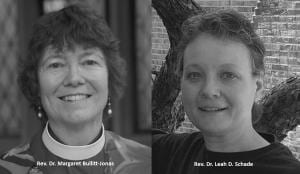
Leah D. Schade is the Assistant Professor of Preaching and Worship at Lexington Theological Seminary in Kentucky and ordained in the ELCA. Dr. Schade does not speak for LTS or the ELCA; her opinions are her own. She is the author of Preaching in the Purple Zone: Ministry in the Red-Blue Divide (Rowman & Littlefield, 2019) and Creation-Crisis Preaching: Ecology, Theology, and the Pulpit (Chalice Press, 2015). She is also the co-editor of Rooted and Rising: Voices of Courage in a Time of Climate Crisis (Rowman & Littlefield, 2019).
Twitter: @LeahSchade
Facebook: https://www.facebook.com/LeahDSchade/




